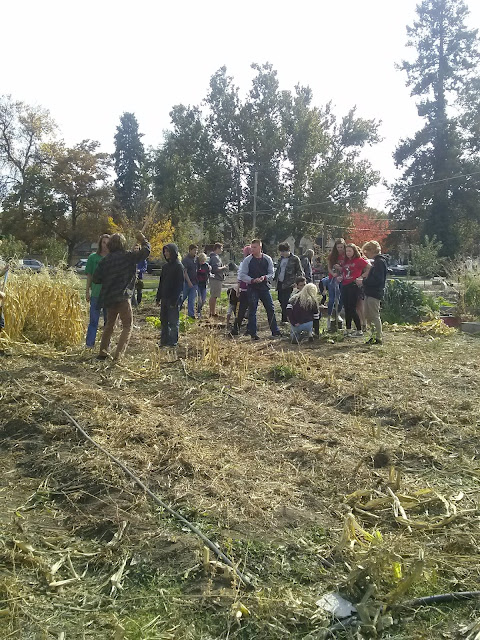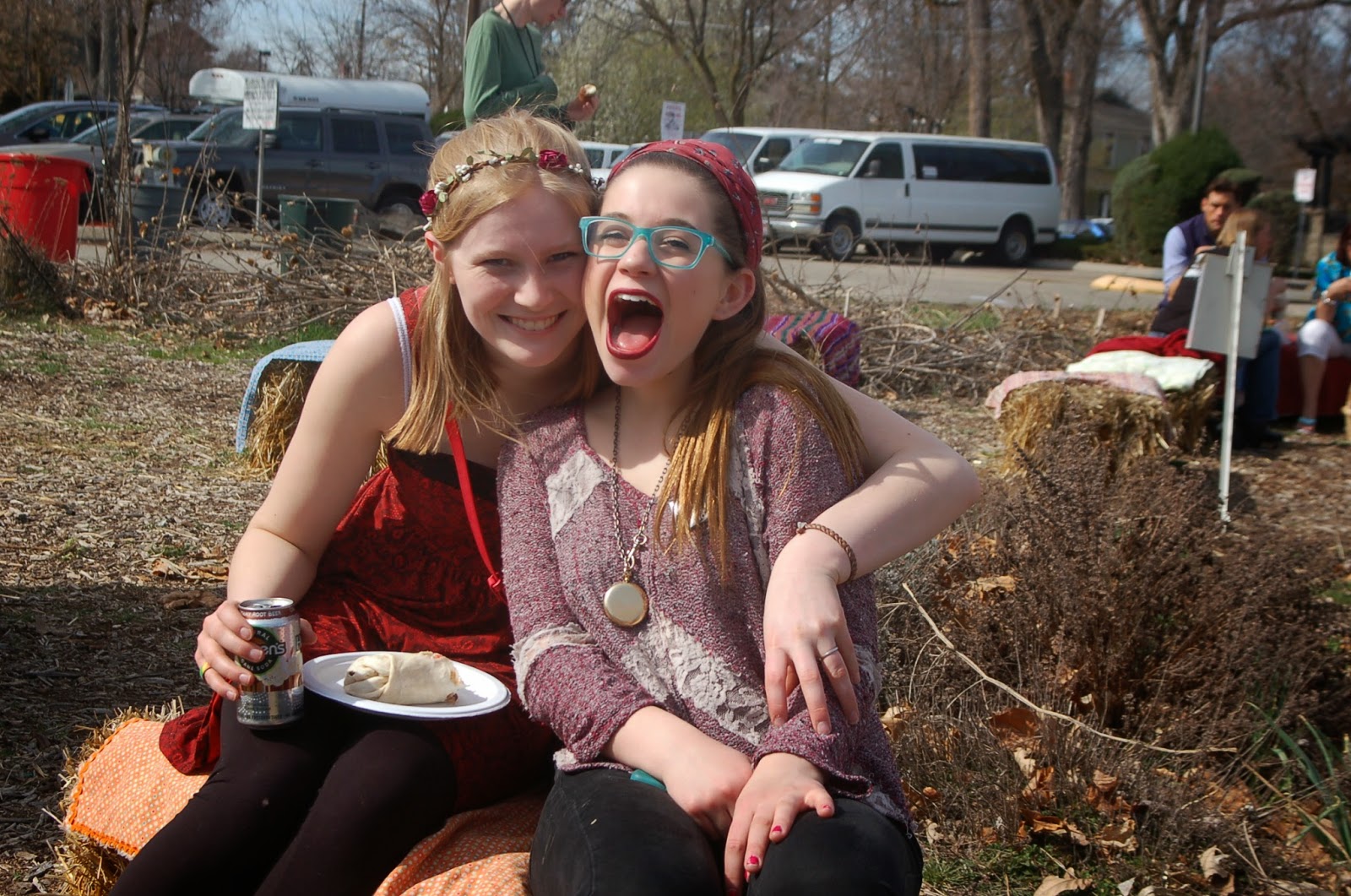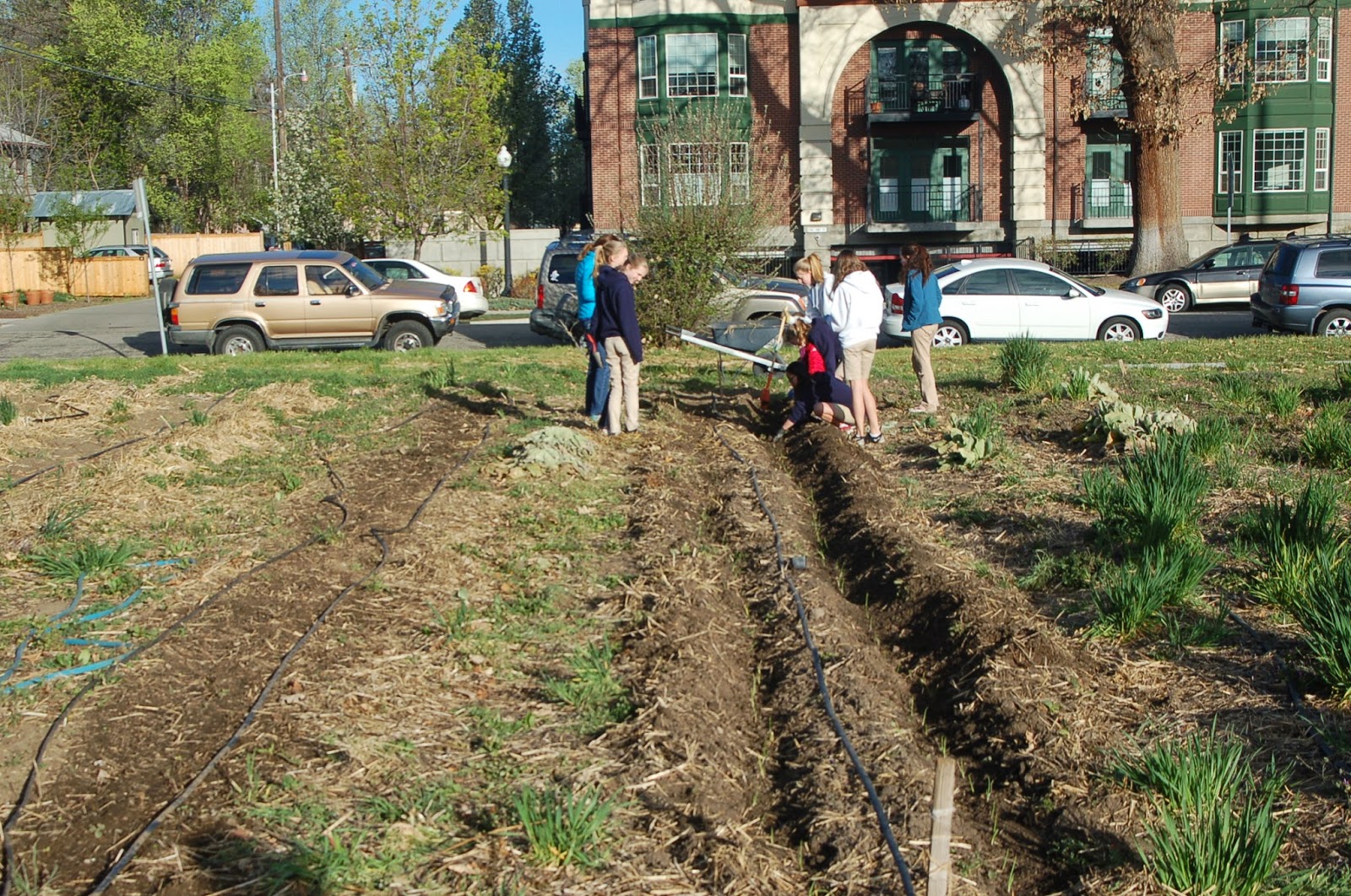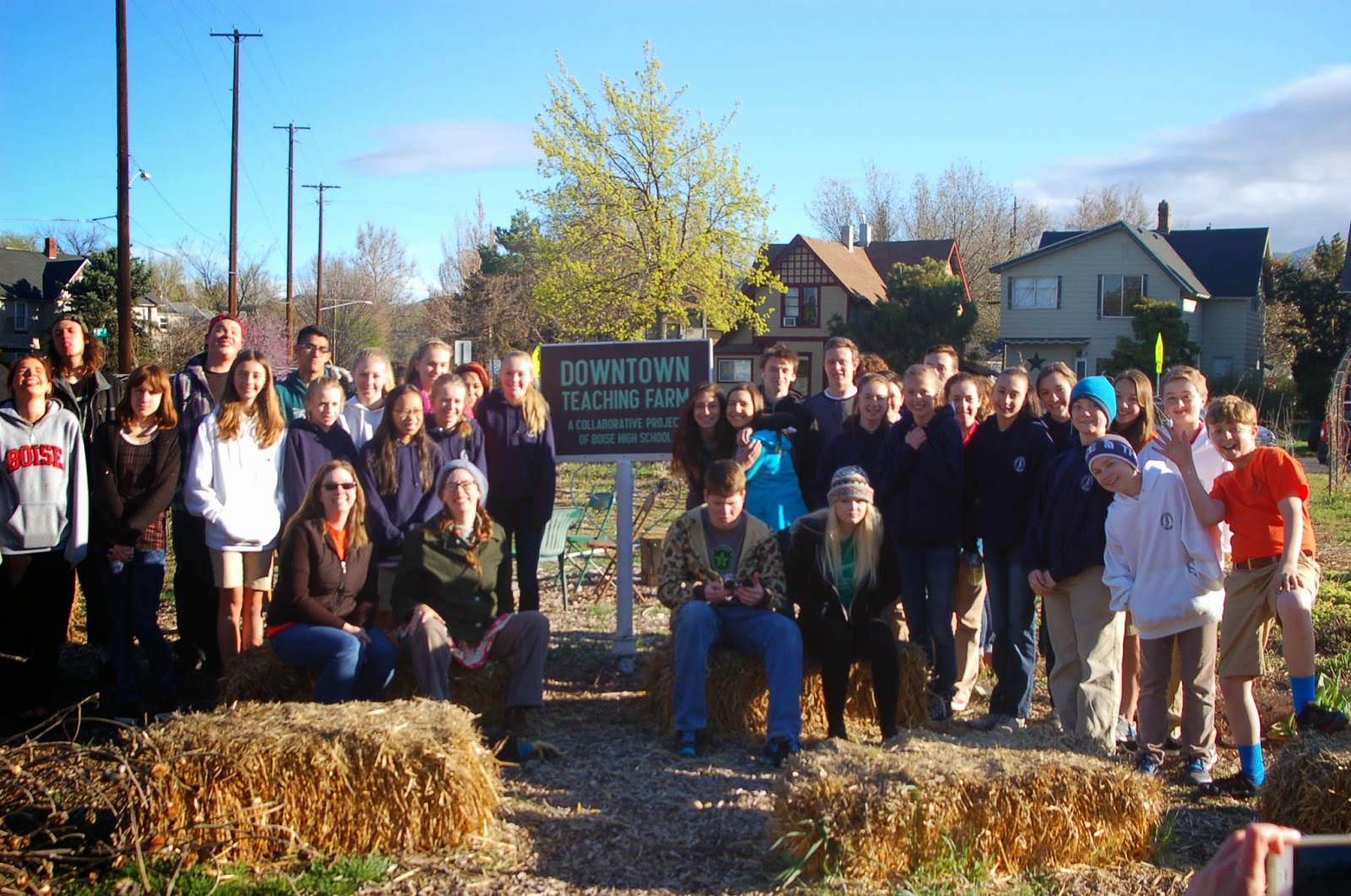Seeding and Spring Planting Suggestions
By: The Downtown Teaching Farm
Updated 2/26/2015
Combating cabin fever and looking forward to spring and summer bounty go hand in hand. We've had so many beuatiful days this February, but it is still too early for most plants to be set outside. Many hours can be spent selecting varieties, ordering seeds, and deciding what to start at home. These are some suggestions we have based on a typical Boise-area spring season.
Secrets to success:
□ Use a seed tray with drainage. If it doesn’t have pre-punched holes, punch about 10 holes in the bottom of the tray. The seedlings will drown without drainage.
□ Fill the tray loosely with soil, and then wet the soil thoroughly and test the drainage before planting. This helps the soil settle, provides a proper reservoir for watering, and moist soil is much easier to work with; it prevents the seeds from floating around and getting all mixed together.
□ The larger the seed, the deeper it needs to go into the soil – a good rule of thumb is that the seed should be about four times deeper than its largest side.
o One important exception – basil seeds need to have light to germinate, so do not bury them at all. They will turn whitish as the seed coat absorbs water from the soil, that is normal, and then they will germinate!
□ Use a shop-light or other overhead light, dangling it about 6” above the soil/seedling level. Leave the light on at least 12-14 hours a day. Expensive UV lights are not usually necessary. Window light is often not direct enough for healthy growth and results in “leggy” seedlings with weak stems.
□ While waiting for the seeds to germinate, cover the tray with saran wrap, this holds water on the surface of the tray and prevents a wet-dry-wet-dry cycle, which is often detrimental to germination.
□ Once the seeds have germinated, remove the saran wrap and don’t over water. Water when your plants look wilted, or test the soil by putting your finger in to the depth of your fingernail, and if the soil feels dry down there, it is time to water. Once water starts to drain out the holes, you know its saturated enough.
□ Plan to transplant your seedlings into larger pots after they have two sets of true leaves. Also, watch them closely that the growing plants don’t get burned by the light bulbs.
□ If your plants start to look sickly in color, they may need some fertilizer, and they are probably ready for real sunlight. We use a very dilute (about 1 capful per gallon) solution of Alaskan Fish Fertilizer, being careful to turn the lights out until any extra fertilizer has evaporated from the leaves (it can easily burn).
□ A cold frame can be easily made out of clear plastic, old window panes or plexiglass, and many other household “leftovers.” This is an excellent choice for an intermediate home for your seedlings. By about 8 weeks most plants become too large for their indoor trays, need real sunlight, but it is still too cold to plant them outside. A cold frame’s purpose is to provide ample light (with a clear roof and sides) and protection from nighttime frost.
In our classrooms at Boise High we plant broccoli, kale, cauliflower, cabbage, onions, lettuce, spinach, and perennial flowers in early February, for planting out in the garden in March and April. Peas, potatoes and mesclun mix can also be started early, but do best straight into the ground in March and April. We plant peppers and eggplant next, as they take longer to germinate and like to have several sets of leaves before planting in late-May or early June. Annual flowers, herbs, and tomatoes are usually best started in late February or March – two months of growth is plenty for them to be planted out in late May. In addition, many of the summer crops do best planted straight into the ground – corn, squash, cucumbers, and beans among them. Frankly, they do not need or appreciate your loving seed trays – they want real sun and warm soil and will produce when summer tells them its time.
Plant
|
Start your seedlings indoors:
|
Plant your seedlings in the garden:
|
Broccoli, Cauliflower, Kale, Cabbage, Onions, Lettuce, Spinach, Perennial Flowers and Herbs
|
Mid-Late February
|
March and April
|
Peas, Potatoes, Spinach, and Mesclun mix (mixed greens), Onion sets and starts
|
___
|
Direct sow in March and April
|
Peppers and Eggplants
|
Mid-Late February, use a heated seed mat to improve germination. Many DIY seed mat options available online.
|
Late May and Early June
|
Annual Flower, Annual Herbs, and Tomatoes
|
Late February through March. About 8-10 weeks of growth indoors is ideal. Plan to transplant into larger pots by mid April when plants have two sets of true leaves.
*Tip: Basil needs light to germinate, let seeds rest right on the top of the soil tray, exposed to the light, and keep moist until germinated.
|
Late May and Early June
|
Cilantro
|
___
|
Plant in early May for June harvest, Plant again in late August for late September harvest (salsa time!)
|
Corn, Squash, Cucumbers, Beans, Carrots, Beets, Chard
|
___
|
Direct sow in Late May or Early June when the soil is warm and nights are averaging in the low 50’s.
|
Garlic
|
___
|
Plant cloves in October for next spring.
|













































